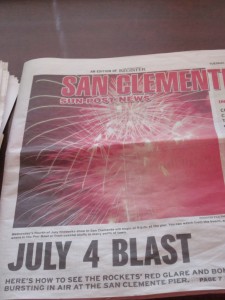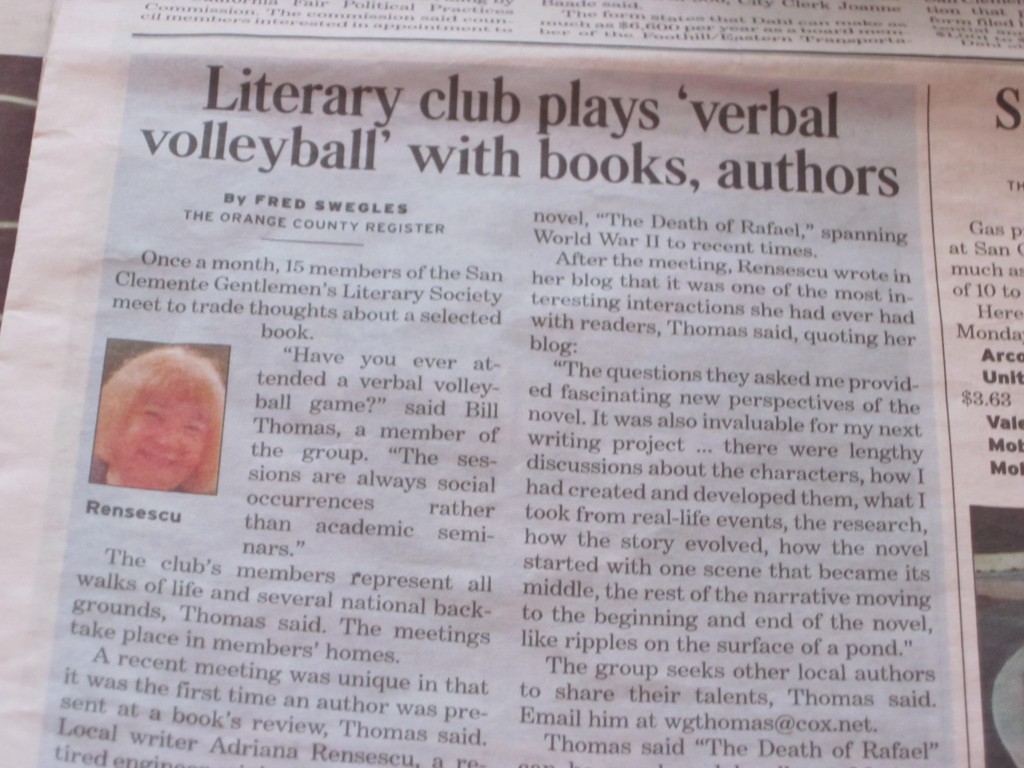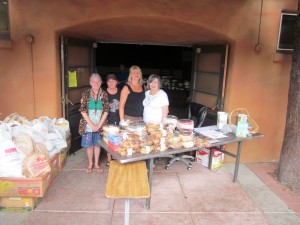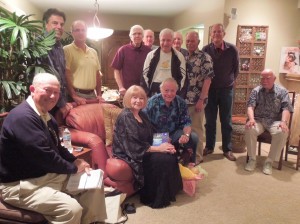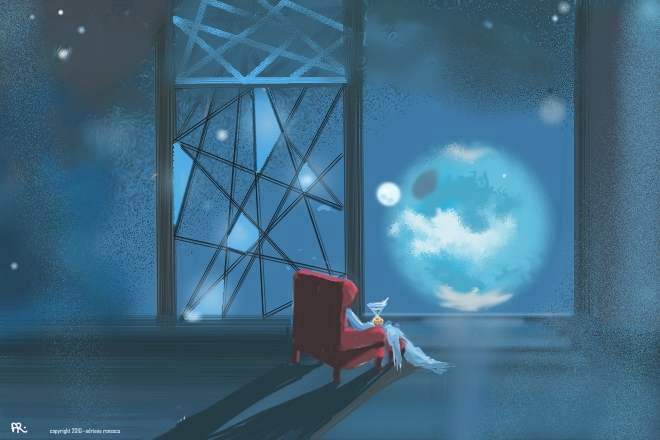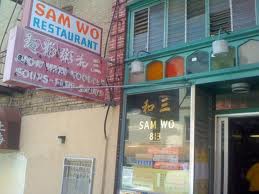Today I went to Toby’s House and met with Jennifer Wallace, one of the directors, and donated my ‘second’ royalty check for The Death of Rafael, and also a copies of both TDOR and The Wolves of Pavlava to be used for their silent auction at the various charity events they hold during the year. Toby’s House provides resources, shelter and clinics for moms and babies in need. What I especially liked was that they provide shelter for women with children from an abusive environment. It is a good cause.
The Death of Rafael–first fruits of labor
Last Monday, July 2, I had the priviledge and great joy of donating to the Father Serra Pantry in San Juan Capistrano my first royalty check from the sales of The Death of Rafael. The Pantry provides vital foodstuffs and supplies for needy familes in San Juan Capistrano and surrounding areas. On any given day, 100 to 150 people are being served by the volunteers at the pantry on Camino Real, outside of the Mission Basilica. The local markets provide the bulk of fruits, vegetables, eggs, meat and fish. However, the markets provide mostly perishables and the pantry is always in need for cash donations so that it can purchase cooking oil, sugar, flour and other such staples.
The mornings at the pantry start with volunteers preparing the food packages to be handed out–big bags with fruits, eggs, vegetables, etc. Also, if the people coming in for food stuffs have special needs–baby formula, some special food–the pantry can provide it. After the packages are prepared, the volunteers meet briefly before opening to exchange quick information and updates and then offer short prayers. The volunteers are from all walks of life, some members of the parish, other just wanting to give back to the community.
Here it is a bad photo (yeah, I took it, my apologies to the ladies) of some of the volunteers (there were about 20 on the day I was there)
THE DEATH OF RAFAEL–The San Clemente Literary Book Club
On Thursday, June 21, 2012, I was invited by the local San Clemente book club to discuss and answer questions about THE DEATH OF RAFAEL. The meeting took place at the beautiful home (killer view over San Clemente and the ocean) of Candy and Jim, who were this month’s hosts. They welcomed everyone with big smiles and beautifully arranged (and delicious) refreshments and hors d’oeuvres. They welcomed me in particular with yellow roses and a big surprise–a ‘yellow bundle.’ When Candy told me in an email that there will be along side the display of my novel, a ‘yellow bundle’, I thought it was something new out there, in the world of hosting events and parties. You know, like those swatches given at the Oscars… I even checked the Internet and all I got was ‘Pokemon yellow bundle’, or a hardware store that offered ‘yellow cable bundle.’ The surprise was complete and it was the most wonderful expression of welcome for my novel.
Now I know that some of you may have not read the book, so the photo of the ‘tableau’ so artistically put togheter by Candy, illustrating the very heart of the novel might be a spoiler. Therefore, no words and no captions. 🙂
The book club is a mix of people who are retired and those who are still pursuing their professions and careers. They have been meeting for two years and have read 27 books. Let me just say that this was one of the most interesting and invaluable interaction I’ve had with readers as a writer. Not only were they very attentive readers and passionate about what they read, but also they were erudite and insightful reviewers. The questions they asked me provided a fascinating new perspective of the novel. It was also invaluable for my next writing project. (We’re not going to talk about it now…)
There were lengthy discussions about the characters, how I had created and developed them, what I took from real life events, the research, how the story evolved, how the novel started with one scene, that became its middle, the rest of the narrative moving to the beginning and end of the novel like ripples on the surface of a pond. Quite a few of the members of the club were very interested in the historical part of the novel and (bragging coming up) expressed their appreciation on how I blended history with the destinies of my protagonists and in the character of Egon von Klaussen.
When it was my turn to ask questions, I asked which of the characters in the book interested them most (not LIKE, but INTEREST.) The answer was, well, interesting, as it matched those characters which I found the most interesting to create as a writer–Egon von Klaussen, the priest Antonyin Andreasz, Francisco Cardenaz and dona Isabel. The character of Giselle elicited sadness more than anything else, but also understanding for the course of her life. The one comment that truly struck to my very core and left me quite frankly speechless was: “that scene you described in the ditch at the edge of the forest we’ll stay with me the rest of my life.’ Also there was appreciation for how Francisco Cardenaz’ character and life evolved through the novel. One of the readers summarized it thus–Cardenaz ended up exactly where he should have. Any other ending would have been ‘unreal’ and would have invalidated the whole novel. Wow. The ending is the hardest part of a novel.
For those of you who are also writers, you do understand I know how validating a discussion like this can be. I am very grateful to the members of the club for all that they offered in the discussion and their comments. THANK YOU! This may sound strange, but they helped me understand and reveal to me the patterns of my writing and creation of stories and characters.
The organizer of the book club is Bill Thomas, who is a professor of English at one of our local collages and also a writer himself, who had just published his own novel, UPSTAGE, DOWNSTAGE, CROSS. It ia a novel for the theatre lover, based on the career of the author’s father. The background stories Bill told us at the meeting were marvellous and very, very funny, in the true tradition of the British stage. It is a must for my summer reading. So, check it out!
Also thanks go to Candy for the photos. I look pretty good in them without photoshopping, so compliments go to the great photographer.
THE DEATH OF RAFAEL DISCUSSIONS.
Stefania Berczeller, a reader from Israel, wrote this review of THE DEATH OF RAFAEL under a different post in this blog, but I am taking the liberty of making it a new post. This review is very important to me because it comes from someone whose family has experienced the events of the war and Holocaust. Her affirmation of my story and characters carries a great weight with me and it validates much of my novel.
Here it is:
The Death of Rafael. Review
I have read this book with a great interest. I understood from the beginning that it isn’t another book about the Holocaust even though the shadow of the most terrible event of hisory hangs over the whole story.
First of all I would like to talk about the structure of the book. It isn’t a linear structure; the chapters are dated and places are indicated but not year after year, nor month after month. The writer used the flashbacks ina special order, according to the events. It makes the story interesting and so the readers can’t leave it until the end. The writer has described the placs in an excellent manner, using a rich vocabulary adapted to each situation. These descriptions are the scenery of the tragedy. After the characters had been created by the writer, they acted, each one in his own manner.However I felt between the lines the presence of the writer, her feelings or thoughts. It is known that so did all the great writers. It reminds of Flaubert’s famous words when asked about his character, Emma: ” Emma- it’s me”
The three main characters, Giselle, Daniela and Francisco are the victims, each one in his own way, of the tragedy.The mother who lost her child, the young woman who lost her childhood and youth and the son who grew up with a false identity that he can’t change anymore. There is no fate or prediction of fortune tellers even if Giselle believes in it. The tragedy is the direct consequence of the Holocaust and of course of the War.Most of the other books written about these events tell about what happened at that time. The Death of Rafael is more a book about the life after the events with flashbacks to the tragical past. The shadow of those events still hangs over even the third generation.
There is no happy end in this book. However, it may be a peaceful end and also hopeful for Daniela and FrancIsco who have found each other and will try to recompose a family. They will try to find a way to live with the past but to start a new life. FrancIsco will continue his life as a Catholic cardinal but without hiding his origins. It’s possible!
About the othes characters I would like to write some lines about Count Egon von Klaussen.He isn’t a positive character. The writer by creating him didn’t try to rehabilitate him by the fact that he didn’t kill the baby he had found. Von Klaussen saved the baby for himself, for his loved wife. It wasn’t an act to save a ” Jewish child” as he said to his friend Zeller. He was a German warrior who fought for his Fuhrer and when he saw his country in danger of being destroyed, especially by the Russians, he took part in the failed conspiracy in 1944. It was exactly at that time (in April 1944) that the deportation of the Hungarian Jews started, but no one has tried to stop it. The writer decsribed this character as he really was.
As I hav said at the beginning of this short comment( I could write more!)I appreciated how the writer has composed the book and created her characters, no stereotypes and no cliches in this book. We, the readers are taken to the end of the books without trying to stop the reading. I think readers who like good books will agree with me.
Stefania Berczeller
I am trasferring here also a comment made in answer to Stefania’s review, so that it’s all together.
[This is an eMail I sent to the web address a few weeks ago, but which fell through the cracks.]
I’m about halfway through “Rafael”. Egon von Klaussen is indeed a tragic character. As is Miron – his fall from wealth and power to salesman certainly parallels many another European immigrant.
I found that 11 of the officers in the July 20 plot held the Knight’s Cross. After that, the leader decreed that only he could give out any more.
I second Stefania’s comment about the writing. The descriptions are quite good – especially (as far as I’ve gotten) the opening of the Cardenas section, describing the pampas.
I think I’ll have to diagram the book, to keep track of the timelines and the characters.
I came across a review of a book that might interest you:
“Hitler, Mussolini and the Vatican: Pope Pius XI and the Speech That was Never Made”, by Emma Fattorini
The reviews there tell just about everything about the book.
The review I read elsewhere says
“The book is a political biography of Pope Pius XI and does not cover events beyond his death in 1939. It does, however, provide great insight into Pius XI’s pontificate and contributes to our understanding of the troubled question of Pope Pius XII and the Holocaust.”
Fattorini worked from the “recently opened Vatican Archives”, including papers of Cardinal Pacelli – who served as a moderating influence on Pius XI.
Mike Zorn
Sigma Xi
THE DEATH OF RAFAEL Chinese Restaurant closes!
…sort of.
The real life restaurant I used for Lee Wei Ahn’s in the novel–the restaurant in Chinatown in the opening of The Death of Rafael–Sam Wo’s in San Francisco is in the news.
I changed a few things–like the location and the age of the place–but the waiter. Oh, the waiter! I don’t know if I had Edsel Ford Fung, the man himself ‘serve’ me, but the waiter I had did indeed slam the plate in front of me and would only hear the number of the item on the menu, interupted me with something of a bark when I said ‘chow mein.’ And the food was, well… interesting.
Another Review for The Death of Rafael
I promise not to post every single review, however, while they are all precious and prized, now and then there is one that hits home in a special way, either because of who wrote the review and their connection with the story, or because they provide an insight that surprises me.
One of my readers, an author in her own right (Life Under The Dark Sky), Diana Branisteanu, left such a review for The Death of Rafael on Amazon.com. She brought out the one theme that pervades the novel, one which developed as the story moved through time and countries–one that speaks of the sacrifice of the older generation so that their sons and daughters survive and thrive and capture life. This theme developed silently, unknown to me, as my characters took a life of their own and decided to move in their own direction. Yes, characters do take a life of their own.
Here is the review:
The Death of Rafael is a story of how war affected the life of people of all ages, ranks and origins. Desperate acts of survival, extreme risk taking, and surrender at the mercy of fate even long after the war is over, mark the well defined characters. The structure of the story line takes the reader on a journey in time and across the world’s map with detailed descriptions of the places and historical events. The plot is so intense and well built, that most of the time I could not wait to see what happened next. Renescu has envisioned an extraordinary tale of heartbreak, courage, heroism and perseverance that touches the heart and soul of the reader with every page. Destinies are linked together in a net of secrets hard to unveil, and even harder to believe. In the end the sacrifice of the older generation leads to hope for the next one. A very impressive book, from cover to cover!
